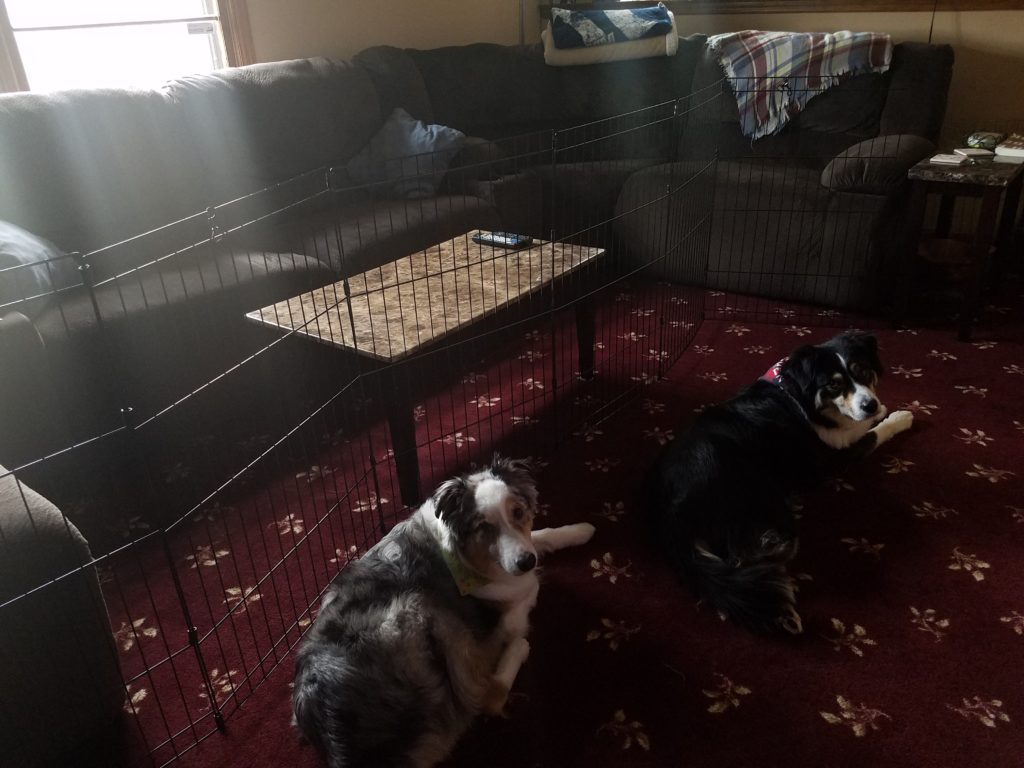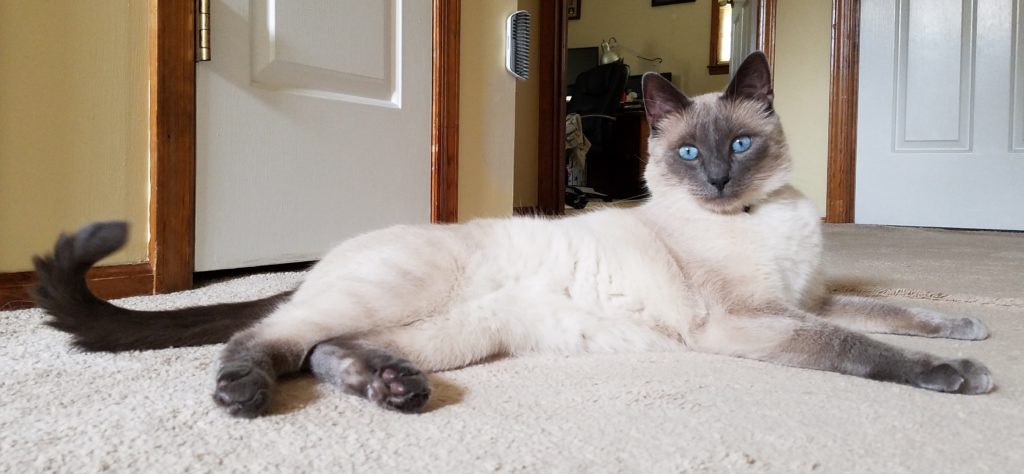I truly believe that the key to a successful relationship between humans and animals is proper management. The things we humans find distasteful are often second nature to our animal counterparts. This is why the large, dangerous carnivores are behind steel bars or reinforced glass at the zoo. We humans don’t particularly want to be eaten.
While training is important, it cannot be done successfully without management. When you were a small child, just learning to navigate the world, your parents held your hand or picked you up before taking you across a street. That was management. You couldn’t be expected to be responsible enough to watch for traffic or know the difference between a red light and a green one. Therefore, your parents made the choice to manage the situation appropriate to your level of awareness and ability. Today, I would imagine, you navigate streets without too much difficulty. But you didn’t start there.
When we bring animals into our homes there are a whole host of things they can’t be expected to know. Rules like:
- Just because food is available doesn’t mean you should eat it.
- The most comfortable place to lay down is not necessarily open for the taking just because it is unoccupied.
- Joyfully leaping on friends to invite them to play is rude.
- Objects within reach are not all for chewing even if they look like a lot of fun or are satisfying to chew.
These rules don’t make any sense to a dog (or cat for that matter)!
I meet so many frustrated people who ask me to help them fix a problem they’re having. “My dog jumps up on the counters and steals things!” “My dog is constantly getting up on the bed and I really don’t want them on there!” “My dog jumps on all of my guests!” “My dog keeps destroying my reading glasses!”
The truth is that if everyone knew to practice excellent management, I would be out of a job! In most of the complaints I hear, the solution starts with making it impossible for the dog to make the mistake. Again, keep in mind, what we consider a mistake, your dog considers to be normal, natural behavior. When people complain and say, “I just want a normal dog,” most dog trainers will say, “NO, YOU DON’T!” (for more on that topic, read the excellent article HERE by Casey Lomonaco).
Right now, as I write this, there is a large metal gate slung across my living room. The reason? My cousin’s dog, Scout, is staying with me. At Scout’s house, dogs are permitted on the furniture. At my house, they are not. Now, I could spend half my day telling Scout to get off the couch which would not be particularly good for our relationship (he would be annoyed with me, and I would be annoyed with him) or I can put up a gate to prevent him from getting on the couch in the first place. I chose the latter. Scout has stayed at my house many times and he’s already started to develop new habits when in our home. This visit, even when I move the gate out of the way, he doesn’t even seem to consider the couch as an option. He’s already developed the habit of choosing one of the available dog beds or the floor near my feet instead. Did I train him to do that? No. I simply practiced excellent management. Perhaps the next time he visits, we won’t need the gate at all, but if we do, we do. I would rather us both be in harmony than risk hurting the relationship we’ve formed.
While I say that training is important, arguably, management is THE MOST important. If you never learned how to cross a street by yourself, it might be socially awkward, but as long as you had someone to hold your hand or carry you, you’d be fine. In the same way, if you never taught your dog to “leave it,” but practiced excellent management of your dog’s environment, your dog would never need that training. I don’t spend any time training Scout when he is visiting our home, but I do manage his environment, and thus his behaviors, carefully.
I should also point out that someone DID teach you how to cross a road. But they very likely were holding your hand WHILE they did it until you’d proven yourself capable of doing it on your own. Management needs to stay in place before AND DURING training for you to achieve your training goals!
You will have the most success if you walk through your home and try to see it through the eyes of your dog. What items should you be keeping out of reach? What tools can you use to prevent your dog from practicing unwanted behaviors? What safety concerns look like a whole lot of fun from the perspective of your four-legged family member? If you miss something and they make a mistake, you’ll know what you need to fix to prevent a “next time.” Maybe you need another gate. Maybe a leash kept by the front door. Perhaps a better storage solution to keep valuable objects safe from puppy teeth. I have faith that you can come up with a solution that works, as long as you come to understand your dog isn’t likely the one who needs to change their habits first. After all, Scout would never have learned to choose the dog beds to rest on if I hadn’t been careful to consistently block the couch. My habits changed his habits.
And just in case you are thinking, “Well, that’s all fine and dandy because Scout is only with you sometimes. You would never live with gates all around your house all the time,” I would like to submit the following photos as evidence to the contrary.

Rubber band on the cabinet doors in the bathroom to prevent the cat from opening them and going inside.

Renegade (left) and Scout (right) in the gated off living room to prevent Scout from getting on the couch.

A side table in my dining room with a gate surrounding houseplants. Sign reads “Protective Custody” and shows an image of a cat (not mine) eating plants.

Caffrey, our would-be plant eating, cabinet entering, cat.
Happy Training! (AND MANAGEMENT 😊)
Nicole L Yuhas CPDT-KA
This blog is intended to be informative as well as entertaining. It contains my opinion which may not reflect the opinions of any organization I may be affiliated with. My opinions should not be interpreted as those of my coworkers, family, friends, casual acquaintances, and certainly not the opinion of my cat, although my dog probably agrees with everything I say, if for no other reason, than because I provide the treats and meals (cats are less inclined to agree with anyone but themselves). Information provided here is accurate and true to the best of my knowledge but, as information and opinions change, neither the facts nor the opinions expressed here may be true or accurate at any future date. As I don’t currently own a time machine, I cannot be responsible for things that prove to be untrue, or opinions I change my mind about, should those changes become apparent in the future. It should also be noted that, as I am human, there may be omissions, errors or mistakes in the information provided here. Frankly, even if I were a computer, it is likely there would be errors, as computers, in my experience, can be a royal pain in the butt. This blog may contain affiliate links which you are under no obligation to click. If you click them, they will hopefully take you the place I intended. But they may not. As I’ve said, computers can be a pain. If you find yourself somewhere you don’t think I intended, click your ruby slippers three times together and say, “there is no place like home.” If you do that, and click the “back” button, you should be safely returned. Computers can, at times, have a mind of their own. Any training suggestions or opinions expressed here should be taken as information only and should not be seen as advice particular to you or your dog’s unique situation. Please consult with a training professional before taking any action.
